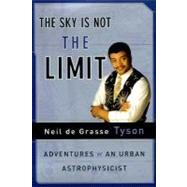
| Preface | p. VII |
| Introduction | p. 1 |
| Night Vision: Building a relationship with the sky | |
| The Early Years | p. 3 |
| The Middle Years | p. 32 |
| The Later Years | p. 42 |
| Scientific Adventures: The fun and frustrations of being a scientist | p. 59 |
| Dark Matters: A view from the dark side of space | p. 107 |
| Romancing the Cosmos: For the love of the universe | p. 131 |
| The End of the World: The science of catastrophe | p. 153 |
| God and the Astronomers: A search for meaning in the cosmos | p. 169 |
| Space-Time Continuum: A chronicle of life's minutiae | p. 185 |
| Acknowledgments | p. 193 |
| Table of Contents provided by Syndetics. All Rights Reserved. |
The New copy of this book will include any supplemental materials advertised. Please check the title of the book to determine if it should include any access cards, study guides, lab manuals, CDs, etc.
The Used, Rental and eBook copies of this book are not guaranteed to include any supplemental materials. Typically, only the book itself is included. This is true even if the title states it includes any access cards, study guides, lab manuals, CDs, etc.
Excerpted from The Sky Is Not the Limit: Adventures of an Urban Astrophysicist by Neil De Grasse Tyson
All rights reserved by the original copyright owners. Excerpts are provided for display purposes only and may not be reproduced, reprinted or distributed without the written permission of the publisher.